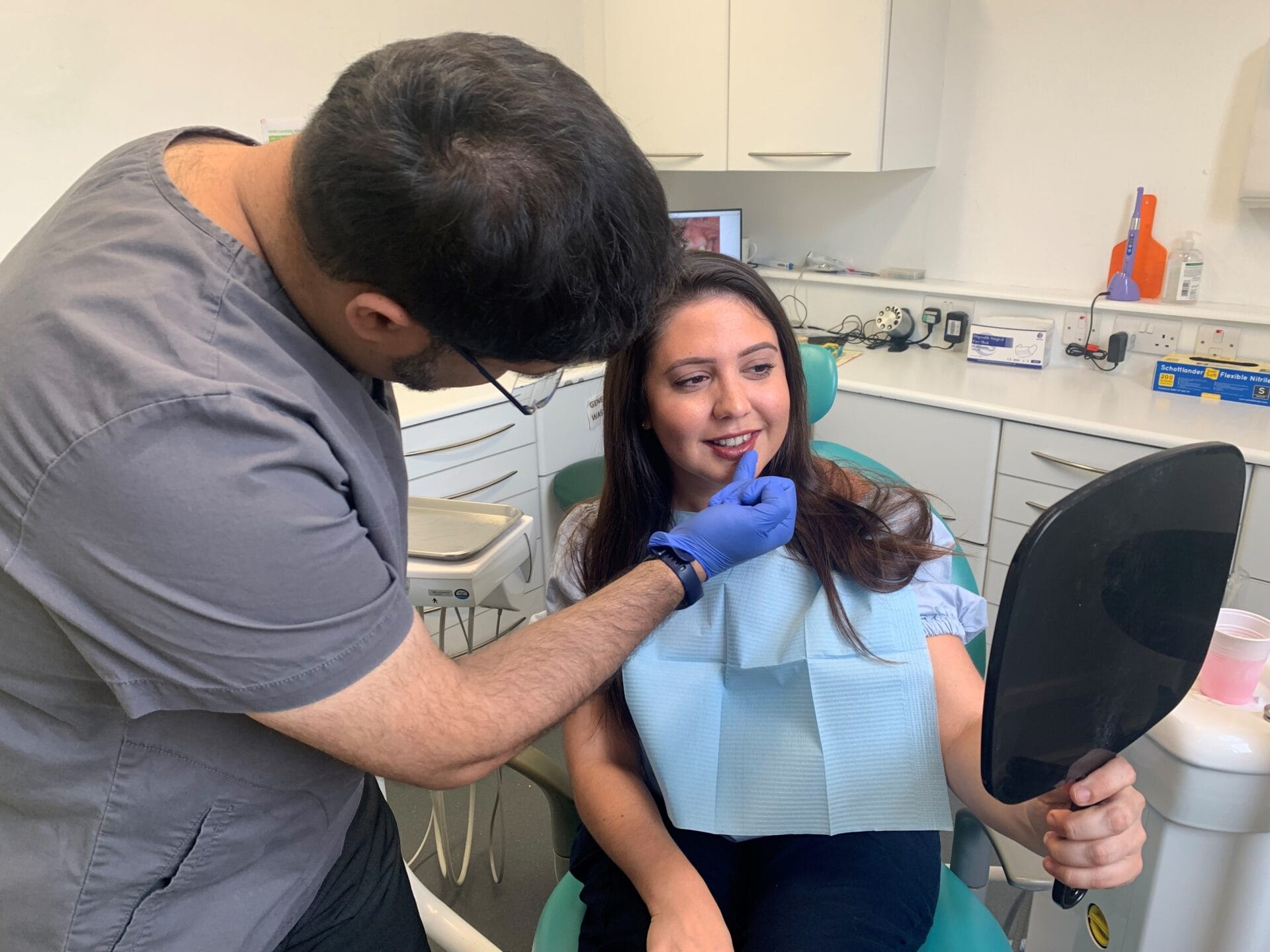Recover Functionality and Aesthetics: Dental Implants Kent Solutions
Recover Functionality and Aesthetics: Dental Implants Kent Solutions
Blog Article
Experience the most up to date Innovations in Dental Implants Modern Technology
As the area of dentistry continues to develop, the improvements in oral implant modern technology have actually been absolutely nothing except remarkable. From the use of sophisticated materials that enhance sturdiness to the application of digital imaging for exact positioning, these advancements are transforming the landscape of dental care. With minimally invasive surgical techniques and the personalization abilities of 3D printing, clients now have access to tailored remedies that were as soon as unbelievable. The combination of innovation is reinventing the capability of oral implants, assuring enhanced end results and individual complete satisfaction.
Advanced Products for Improved Resilience
In the world of dental implants technology, the assimilation of sophisticated products has substantially added to enhancing longevity and longevity of these vital dental prosthetics. The use of products such as titanium alloys, zirconia, and ceramic compounds has actually reinvented the field by using increased stamina, biocompatibility, and resistance to corrosion.
Titanium alloys are widely made use of in oral implants due to their outstanding strength-to-weight proportion, corrosion resistance, and compatibility with the body. These alloys make sure the security and long life of the dental implant by enduring the pressures exerted throughout eating and talking, giving a trustworthy service for clients looking for long lasting tooth substitutes.
Zirconia, a kind of ceramic material, has actually obtained appeal for its biocompatibility and all-natural tooth-like look. Its high toughness and resistance to put on make it a suitable choice for dental crowns and bridges, enhancing the overall aesthetic appeals and functionality of the implant.

Digital Imaging for Specific Placement
The advancement of oral implants modern technology has actually better progressed with the combination of electronic imaging techniques, ensuring specific positioning of these prosthetics for ideal functional and aesthetic results. Digital imaging plays a critical function in the planning and positioning of oral implants by providing detailed 3D photos of the person's jawbone framework. This technology permits dental practitioners to analyze bone thickness, locate vital frameworks, and prepare the precise setting and angle for implant positioning with exceptional accuracy.
By making use of digital imaging, dental professionals can create online surgical overviews that serve as a roadmap throughout the implant placement treatment. These guides are tailored for every patient, taking into account their distinct anatomy and the preferred outcome. This degree of precision not just improves the success price of dental implant treatments but additionally lowers the danger of complications.
Moreover, digital imaging allows dentists to picture the final prosthetic restoration before the real placement of implants, permitting precise preparation and making sure that the end result meets the individual's visual assumptions. On the whole, the combination of electronic imaging modern technology has reinvented the area of dental implants, offering patients an extra foreseeable, efficient, and patient-specific treatment technique.

Minimally Invasive Surgical Strategies


Improvements in medical approaches have actually brought about the development of minimally invasive methods in the field of dental implantology. These strategies intend to decrease injury to the person, reduce recuperation times, and improve total therapy outcomes. Minimally intrusive operations include smaller lacerations, specialized tools, and advanced imaging technologies to precisely position oral Visit Your URL implants with minimal disturbance to surrounding tissues.
One key facet of minimally intrusive techniques is the use of directed surgery, where 3D imaging and computer-aided layout software program are utilized to intend the implant positioning with fantastic accuracy. This permits an extra predictable end result and can often eliminate the requirement for comprehensive flap surgical procedure.
Additionally, advancements in products and dental implant style have actually also added to read this the success of minimally invasive strategies. Implants with improved surface area buildings promote much faster osseointegration, decreasing the recovery time called for before the prosthetic reconstruction can be put.
3D Printing for Customized Solutions
Using 3D printing modern technology in dental implantology permits for the development of very customized options customized to individual client demands and anatomical variants. This cutting-edge technology allows oral professionals to design and make oral implants with remarkable precision and accuracy. By utilizing electronic imaging strategies, such as cone beam computed tomography (CBCT), in-depth 3D versions of the patient's mouth can be generated to direct the implant preparing process.
Among the key benefits of 3D printing in oral implantology is the capacity to develop patient-specific implants that flawlessly fit the unique anatomy of each individual. This individualized strategy aids boost the total success and longevity of the implant by guaranteeing ideal fit and positioning. Furthermore, 3D printing enables for the production of complex geometries and elaborate structures that would be challenging or difficult to achieve using conventional manufacturing methods.
Furthermore, 3D printing modern technology makes it possible for dentists to enhance the implantation procedure, minimizing surgical procedure time and improving general person experience. With its capacity to develop personalized services quickly and successfully, 3D printing is reinventing the area of oral implantology, offering individuals ingenious treatment alternatives and enhanced outcomes.
Integrated Technology for Improved Capability
Applying advanced technology in oral implantology enhances capability and accuracy, elevating the criterion of care for patients undertaking implant treatments. Integrated innovation plays a critical function in boosting the general success and sturdiness of oral implants. One vital innovation is the combination of electronic scanning and imaging innovations, such as cone-beam calculated tomography (CBCT) and intraoral scanners. These tools permit for comprehensive 3D imaging of the patient's dental frameworks, helping with specific treatment preparation and implant positioning.
In addition, the integration of computer-aided design and computer-aided production (CAD/CAM) modern technology enables the development of custom-made dental implant restorations with outstanding accuracy. CAD/CAM systems utilize digital perceptions to create prosthetics that flawlessly fit the patient's special anatomy, ensuring optimal comfort and performance. Furthermore, the usage of robotic-assisted surgical treatment in dental implant positioning improves accuracy and lessens the threat of human mistake.
Conclusion
To conclude, the current advancements in dental implants innovation offer enhanced toughness via innovative products, exact positioning with digital imaging, minimally intrusive surgical strategies, tailored remedies with 3D printing, and enhanced performance with view it now integrated innovation - Dental implants Kent. These innovations in oral implants innovation are reinventing the field and providing people with even more effective and efficient treatment alternatives for recovering their smiles and oral health
The integration of technology is revolutionizing the performance of dental implants, promising boosted outcomes and person contentment.
The development of oral implants technology has actually even more progressed with the integration of electronic imaging techniques, making sure exact positioning of these prosthetics for optimum functional and visual end results. Minimally invasive medical treatments include smaller sized incisions, specialized instruments, and progressed imaging modern technologies to exactly put dental implants with minimal disruption to surrounding cells.
Applying advanced modern technology in dental implantology improves capability and accuracy, elevating the standard of treatment for people undergoing implant treatments. Dental implants Kent. Integrated modern technology plays an important duty in enhancing the total success and resilience of dental implants
Report this page